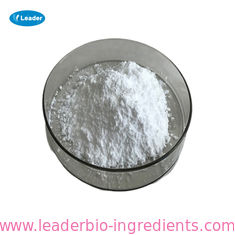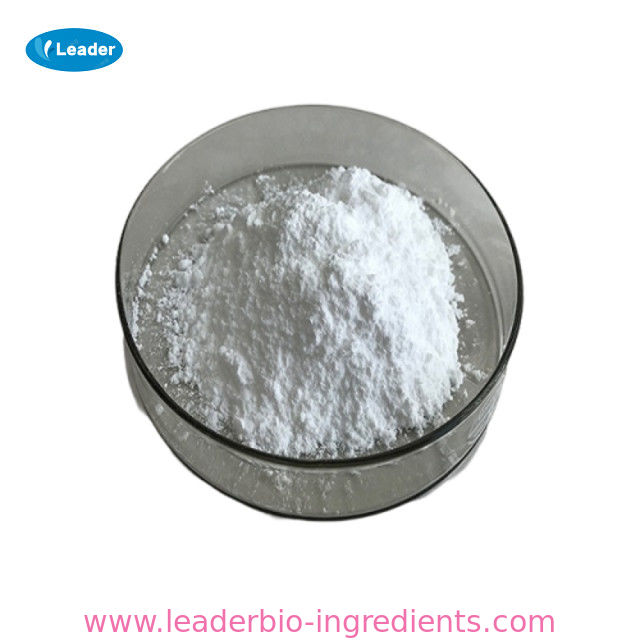| Description |
It can be used to lower intraocular pressure and in the postoperational period in ophthalomological procedures as well as during brain edema. |
| Chemical Properties |
D-mannitol (D-mannohexan-1.2.3.4.5.6-hexaol) is a constituent of several plants including the Manna ash, several edible plants, and seaweed. Parts of the latter contain up to 10 % mannitol by weight. The solubility in water is approximately 230 g/L at room temperature and it increases with increasing temperature. Mannitol is stable under the common processing conditions of foods.
Mannitol is approximately 50 % as sweet as sucrose and non-cariogenic. In the European Union, maltitol is approved as E 421 for a large number of food applications. In the United States, mannitol produced by hydrogenation of glucose or fructose solutions or by fermentation by Zygosaccharomyces rouxii or Lactobacillus intermedius is approved for several food applications. It is also approved in many other countries. |
| Uses |
Mannitol is a polyol (polyhydric alcohol) produced from hydrogena- tion from fructose that functions as a sweetener, humectant, and bulking agent. it has low hygroscopicity and poor oil solvency. it has 1.6 kcal/g. it is approximately 22% soluble in water and is approximately 72% as sweet as sugar, exhibiting a cool, sweet taste. it functions as a dusting agent with starch in chewing gum. it is used in sugarless candy, chewing gum, cereal, and pressed mints. |
| Definition |
A soluble hexahydric alcohol that occurs in many plants and fungi. It is used in medicines and as a sweetener (particularly in foods for diabetics). It is an isomer of sorbitol. |
| Definition |
mannitol: A polyhydric alcohol,CH2OH(CHOH)4CH2OH, derived frommannose or fructose. It is the mainsoluble sugar in fungi and an importantcarbohydrate reserve in brownalgae. Mannitol is used as a sweetenerin certain foodstuffs and as a diureticto relieve fluid retention. |
| Biotechnological Production |
The by far largest quantity of mannitol is produced by chemical hydrogenation of fructose which yields a mixture of mannitol and sorbitol. The mixture is subjected to fractionated crystallization. As direct sorbitol production is less costly, the processing costs have mostly to be borne by mannitol which makes it more expensive than sorbitol. Production from seaweed seems to be of limited importance.
Possibilities to produce mannitol by fermentation were studied using several organisms. They mostly use fructose as an acceptor for hydrogen and glucose as a source of carbon. In a fed-batch culture of C. magnoliae with 50 g/L of glucose as the initial carbon source and increasing levels of fructose up to 300 g/L in 120 h, 248 g/L of mannitol were obtained from 300 g/L of fructose equivalent to a conversion rate of 83 % and a productivity of 2.07 g/Lh. High yields were obtained from Lactobacillus fermentum grown in a batch reactor. The conversion rates increased from 25 to 35 C to 93.6 % with average and high productivities of 7.6 and 16.0 g/Lh. A fast mannitol production of 104 g/L within 16 h was obtained from L. intermedius on molasses and fructose syrups in a concentration of 150 g/L with a fructose-to-glucose rate of 4:1. High productivity (26.2 g/Lh) and conversion rates (97 mol%) were obtained in a high cell density membrane cell recycle bioreactor. Increase of the fructose concentration above 100 g/L reduced the productivity. A fed-batch process with L. intermedius yielded 176 g/L of mannitol from 184 g/L fructose and 94 g/L glucose within 30 h. The productivity of 5.6 g/Lh could be increased to more than 40 g/Lh at the expense of reduced mannitol yield and increased residual substrate concentrations.
As mannitol is more expensive than sorbitol, production by fermentation may become an alternative to hydrogenation of fructose. |
| Mechanism of action |
Today, mannitol is the most widely used osmotic diuretic. It raises osmotic pressure in renal tubules, thus reducing reabsorption of water in the nephrons. As a result, a large quantity of free water is released, sodium secretion increases, and as a rule, an insignificant amount of potassium is secreted. Mannitol is used as an adjuvant drug for preventing oliguria and anuriua. |
| Clinical Use |
Mannitol is the agent most commonly used as an osmotic diuretic. Sorbitol also can be used for similar reasons.Mannitol is administered intravenously in solutions of 5 to 50% at a rate of administration that is adjusted to maintain the urinary output at 30 to 50 ml/hour. Mannitol is filtered at the glomerulus and is poorly reabsorbed by the kidney tubule. The osmotic effect of mannitol in the tubule inhibits the reabsorption of water, and the rate of urine flow can be maintained. It also is used to reduce intracranial pressure by reducing cerebral intravascular volume. |
| Safety Profile |
A poison by intravenous route. Human systemic effects. When heated to decomposition it emits acrid smoke and irritating vapors. |
| Veterinary Drugs and Treatments |
Mannitol is used to promote diuresis in acute oliguric renal failure, reduce intraocular and intracerebral pressures, enhance urinary excretion of some toxins, (e.g., aspirin, some barbiturates, bromides, ethylene glycol) and, in conjunction with other diuretics, to rapidly reduce edema or ascites when appropriate (see Contraindications- Precautions below). In humans, it is also used as an irrigating solution during transurethral prostatic resections. |

